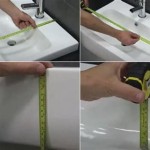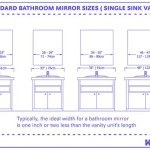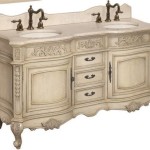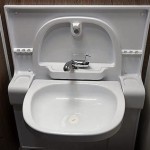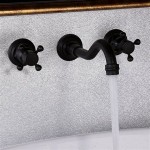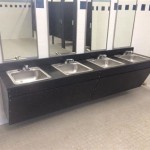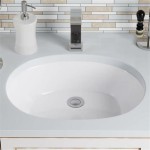Washing Machine and Bathroom Sink Drain: Potential Issues and Solutions
The plumbing system in a household is a complex network of pipes, drains, and fixtures that work together to handle wastewater. One common area where plumbing problems can arise is the connection between the washing machine drain and the bathroom sink drain. This connection, if not properly designed or maintained, can lead to issues like slow drains, foul odors, and even backups. This article will delve into the potential problems associated with the washing machine and bathroom sink drain connection, explore common causes for these issues, and offer practical solutions to prevent and rectify them.
Understanding the Connection
The washing machine drain typically connects to the main sewer line through a dedicated drainpipe. Similarly, the bathroom sink drain also connects to the same sewer line, often through a separate drainpipe. In some instances, especially in older homes or with limited plumbing space, these two drainpipes may converge into the same vent stack before connecting to the main sewer line. This shared vent stack can create a pathway for issues to manifest.
Potential Problems with Shared Drains
When the washing machine drain and bathroom sink drain share a vent stack, several problems can arise. These problems can be attributed to a combination of factors, including improper venting, drainpipe blockage, and the nature of wastewater generated by both appliances.
1. Slow Drains and Backups
One common problem is slow drains and even backups, especially in the bathroom sink. This can occur when the vent stack becomes blocked, preventing air from entering the drainpipe. This lack of air pressure creates a vacuum, hindering the flow of wastewater down the drain. The washing machine's powerful drain pump can exacerbate this issue, pushing water back up the shared vent stack and into the bathroom sink.
2. Foul Odors
Another issue associated with shared drains is the presence of foul odors. This occurs when wastewater from the washing machine, which often contains detergents and residues from clothing, backs up into the vent stack and eventually emanates from the bathroom sink. The build-up of bacteria and organic matter within the drainpipe can also contribute to unpleasant smells.
3. Cross Contamination
Although less common, there is a possibility of cross contamination between the washing machine drain and the bathroom sink drain. If wastewater from one appliance backs up into the other, it could potentially transfer bacteria, viruses, or other contaminants. While this is not a frequent occurrence, it underscores the importance of maintaining proper drainage and vent systems.
Solutions to Address Shared Drain Issues
Addressing problems associated with the washing machine and bathroom sink drain connection requires a comprehensive approach that focuses on both prevention and remediation. Here are some practical solutions:
1. Proper Venting
Ensure the vent stack for the shared drain is properly functioning and free of obstructions. A well-ventilated system allows air to enter the drainpipe, preventing vacuum formation and improving drainage. Regular inspections and cleaning of the vent stack are crucial for maintaining proper ventilation.
2. Drainpipe Maintenance
Regularly clean and inspect the washing machine and bathroom sink drainpipes. Accumulated hair, debris, and grease can contribute to blockages. Using a drain snake or chemical drain cleaner can help remove obstructions and maintain smooth drainage.
3. Separate Drains
If possible, consider separating the washing machine drain and bathroom sink drain with dedicated vent stacks. This eliminates the potential for cross-contamination and improves drainage efficiency. This solution, however, may involve significant plumbing modifications.
4. Drain Traps
Installing a drain trap on the bathroom sink drain can help contain wastewater and prevent odors from entering the living space. The trap, typically a U-shaped pipe filled with water, creates a barrier that prevents sewer gases from escaping.
5. Washing Machine Drain Pump
Ensure the washing machine drain pump is functioning correctly. A faulty pump can lead to slow drainage and even backflow, exacerbating problems with the shared drain.
By understanding potential issues associated with the washing machine and bathroom sink drain connection, homeowners can proactively address these problems and maintain a healthy plumbing system. Proper maintenance and regular inspections are crucial to prevent drain blockages, foul odors, and other complications, ensuring smooth and efficient operation of both appliances.

Washing Machine Floods Our Bathroom Sink Bunnings Work Community

Can A Washer And Sink Share Drain Plumbing Tips House Practical

Washing Machine Floods Our Bathroom Sink Bunnings Work Community

Washer Dryer Under Bathroom Sink Small Layout Tiny House

Kitchen Or Bathroom Twitter Lands Into Debate Over Washing Machine S Placement Trending Hindustan Times

Creative Small Bathroom Decor Ideas Sink Over Washing Machine

Why Your Toilet Gurgles When Washing Machine Drains New Flow Plumbing

Washing Machine Vanity Top Washbasin 600 X 520

How To Install A Sink On Washing Machine Detailed Instructions For Choosing And Installing

40 Bathroom Designs With Washing Machines Digsdigs
